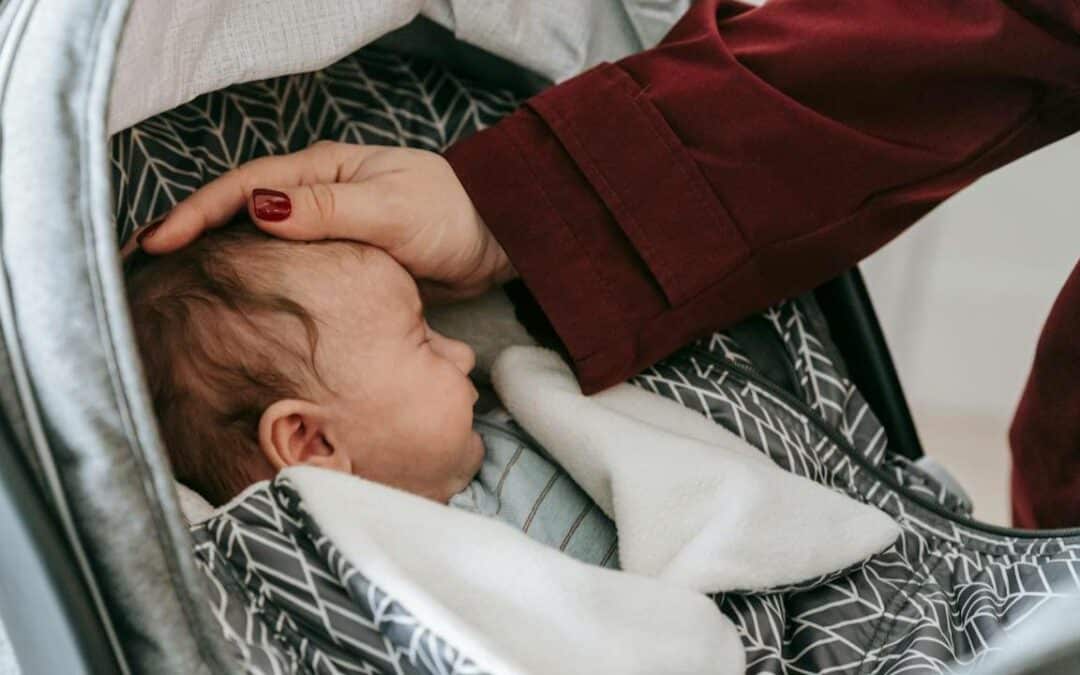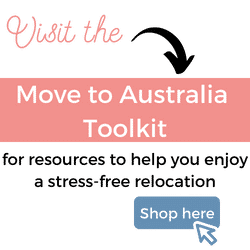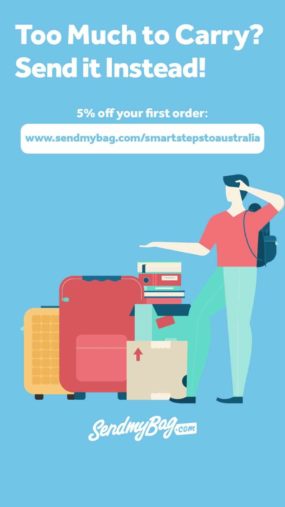I know when we moved to Australia and had to adjust to the new time zone, it was absolutely exhausting! Our daughter suffered with baby jet lag so badly and her nap times were all over the place. Our two toddlers were up in the middle of the night and their bedtime routine completely went to pot because of the effects of jet lag combined with the new environment.
When Melissa from Baby Sleep Code reached out to offer to write a guide about the best way to avoid a jet-lagged baby when travelling on long-haul flights, I jumped at the chance as I’m sure it will be super helpful for those of you who are desperately searching for toddler jet lag tips and how best to avoid those debilitating symptoms of jet lag when you move your family to Australia.
This article about how to avoid a jet-lagged baby or toddler when travelling long haul is a guest post written by Melissa from Baby Sleep Code
Sweet dreams at 30,000 feet: A guide to helping little ones sleep on long haul flights and conquering jet lag
Navigating the skies with babies and toddlers on the trip to Australia can be daunting.
Moving to Australia with your little ones is an exciting journey, but the prospect of long-haul flights and dealing with infant or toddler jet lag can be daunting. As an internationally certified infant and toddler sleep consultant and a mum who has traversed the globe with my own children, I’ve compiled insights and tips to make your journey smoother. From pre-flight preparation to post-flight routines, here’s your comprehensive guide to ensuring sweet dreams at 30,000 feet.
Pre-flight preparation: Setting the stage for sleep success to avoid a jet-lagged baby
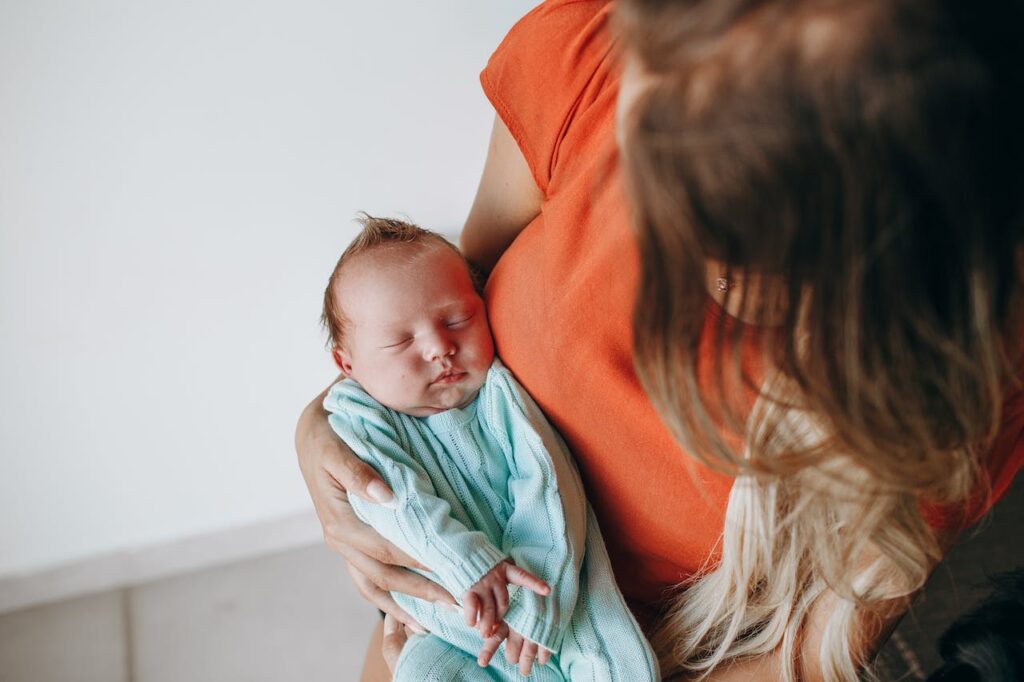
Photo by Helena Lopes from Pexels
Packing essentials for a comfortable journey
Start your journey on the right foot by packing thoughtfully. Consider everything you might need on the flight, during layovers, and include any items you might need for the first day or two just in case the unfortunate happens and your checked baggage goes missing. Find comprehensive sample packing lists in my Baby & Toddler Travel Guide.
Plenty of nappies are critical, even for the toilet-trained toddler. Toilets will not always be readily accessible, if the seatbelt sign is on you must remain in your seats and toddlers aren’t always the best at waiting!
Aim to bring lots of healthy food for your little ones too, as food options on your flight may be limited. Eating an apple or pear at take-off can help equalise a toddler’s ears. Breastfeeding or taking a bottle or dummy at take-off or landing can mitigate ear pressure changes for a younger baby.
Establishing a pre-flight sleep routine
Create a sense of familiarity before the flight by establishing a pre-flight sleep routine. Whether it’s a favourite bedtime story or a soothing lullaby, these rituals can help set the stage for sleep when in unfamiliar places. If you’re travelling with an older toddler or child talk to them about the trip and expectations around sleep. You can explain “we will be sleeping in our chairs, we will bring your blankie and a travel pillow to make you more comfortable” etc. so that they feel well-informed before the flight.
In-flight comfort hacks: Creating a cosy oasis at 30,000 feet
Choosing the right airplane seats for families
When selecting seats, opt for those strategically located for families. Consider proximity to the toilet and ease of movement, especially if you have a walking toddler who loves to explore. If travelling with a baby make sure to prebook a bassinet as these are limited and are essential to ensure you can get some shut-eye knowing your baby is sleeping safely.
Must-have travel accessories for little ones
Invest in travel accessories that can help make sleep more comfortable on your journey. Portable white noise machines, a seat extender for your toddler to lay down, neck pillows or an eye mask. Find some small and fun travel toys that they haven’t played with before to help them keep them entertained for as long as possible.
Entertainment strategies: Keeping them occupied
Screen time dos and don’ts during the flight
Navigate screen time wisely. Bring along entertaining and educational apps but set limits to avoid overstimulation. Avoid screen time before bedtime, as the blue light emitted can hinder the production of melatonin, making it more challenging for them to settle into sleep. Consider downloading favourite shows or movies for offline viewing.
Engaging games and activities to tire them out
Keep little ones occupied with engaging games and activities. Sticker books, colouring books, and interactive games can be a lifesaver. Encourage as much running around and tumble play before boarding to help tire them out. It’s hard for little ones to sit still if they have pent-up energy. And pack lots of snacks!
Soothing sleep aids: Tools for restful in-flight slumber
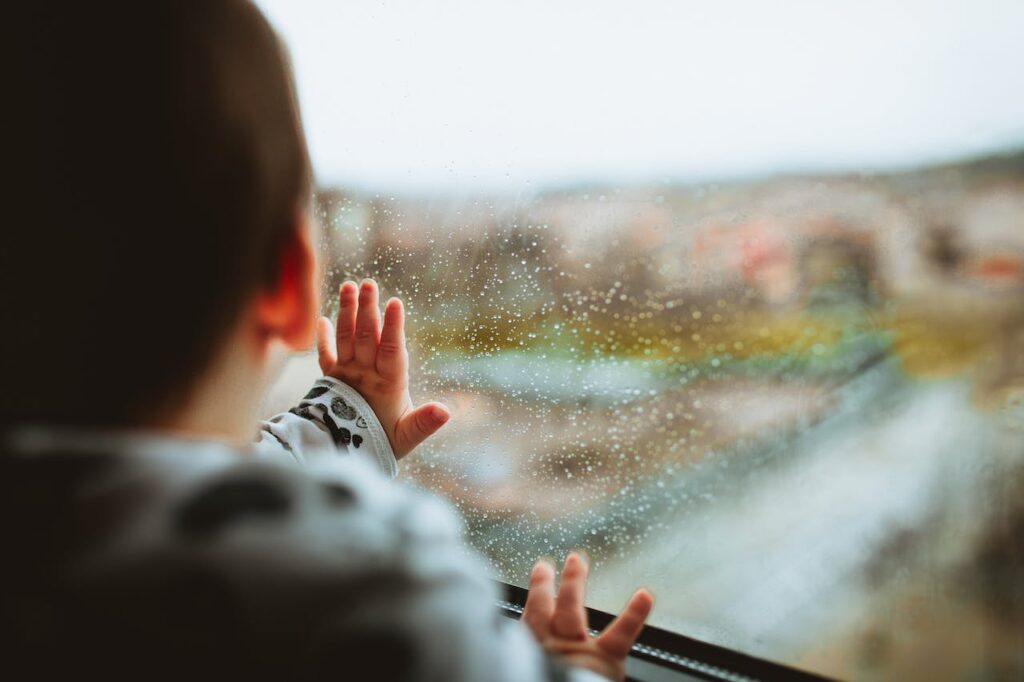
Photo by Juan Pablo Serrano Arenas from Pexels
Travel-friendly sleep aids for children
Bring their familiar sleep associations on the plane with you, such as portable white noise machines, a familiar lovey, and their sleeping bag. These comforting items can create a sleep-inducing environment even at 30,000 feet.
Repeat familiar sleep rituals on the plane
Recreate elements of your child’s bedtime routine on the plane. There won’t be a bath or shower, but brushing teeth or washing their hands and getting them dressed into their pj’s can help signal it’s time to wind down. Read them a familiar bedtime book or sing a bedtime song to help let them know sleep is next. Then when it’s time for sleep a baby might need extra assistance with rocking or feeding to sleep, or try and pop them in their bassinet if they sleep independently at home. For toddlers, try to help them get comfortable and let them know it’s time for sleep after handing them a familiar sleep lovey or blanket.
Navigating baby and toddler jetlag on arrival
Understand the science behind those jetlag feelings
Jet lag occurs when we traverse time zones, disrupting our internal body clock. This rhythm relies on external cues like light, food, and social interaction to regulate our daily activities, influencing feelings of hunger, alertness, and sleepiness.
When you travel to a different time zone, your internal clock becomes disoriented. Suddenly, it’s bright when it should be dark, and there’s activity or meals when sleep is expected. This internal confusion results in jet lag, causing your body to produce sleep hormones when you should be awake and alert hormones when you should be sleeping.
Helping babies and toddlers with jetlag
The best way to help with jetlag as quickly as possible is to transition to the new time zone as soon as you arrive. If you land in the morning, maximize exposure to natural light, and engage in plenty of social activities. Consider any sleep that they have between 7 am and 7 pm as naps and avoid excessive daytime sleeping to maintain sleep pressure overnight. When they do sleep in the day it’s worthwhile that you have a snooze too in case they decide to party in the night. Over a few days to a week you all should start to adjust to the new timezone and they’ll be back to their regular routines.
As you gear up for your journey to Australia with your little ones, armed with practical tips from this guide, we wish you smooth flights, stress-free adventures, and plenty of well-deserved rest. From packing hacks to in-flight comfort strategies, we hope these insights make your travel experience a breeze. Safe travels, and here’s to a seamless and memorable journey Down Under!
Author Bio
This post about how to avoid a jet lagged baby was written by Melissa, an internationally certified infant sleep consultant and founder of Baby Sleep Code. Baby Sleep Code offers virtual one-on-one sleep consulting packages and downloadable educational resources like their Newborn Sleep Guide. Their services are 5-star reviewed and have often been described as “Life Changing”.

